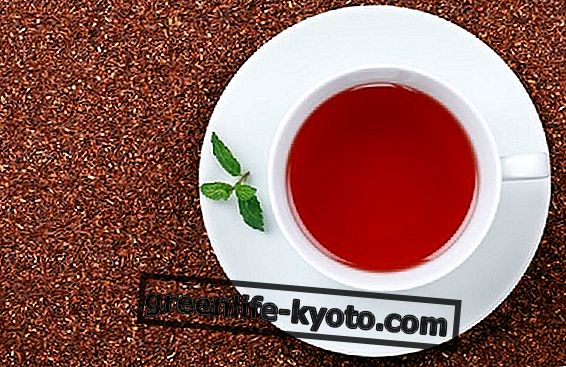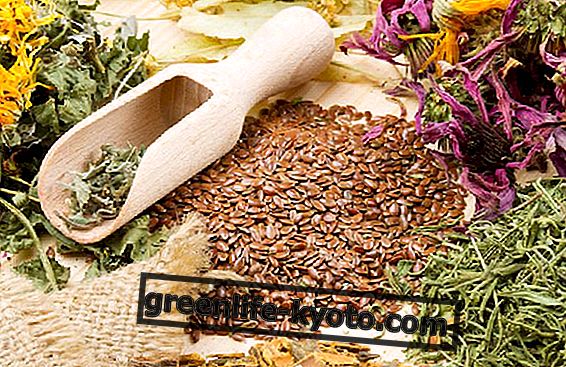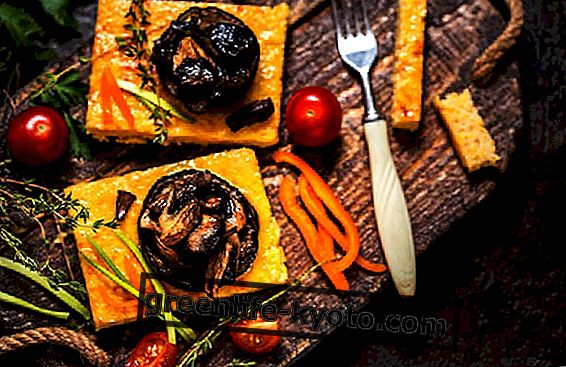Passion flower, a passion fruit plant, is useful for anxiety, stress and menstrual pain. Discover the benefits, when to use it, when to avoid it.
The passionflower ( Passiflora incarnata ) is a plant belonging to the Passifloracee family. Thanks to its calming action, it is one of the most used herbal remedies for disorders of the nerve sphere . Let's find out better.
>
>
>
>
>
>
>

Properties of passion flower
The leaves and aerial parts of the passionflower contain alkaloids, flavonoids, phytosterols, phenol acids, coumarins, heterosides, cyanogens, traces of essential oil. The flavonoids contained in it carry out an action on the central nervous system, especially in the area of the spinal cord, used for the control of movements and sleep centers.
Recently it has been shown that these active ingredients are able to bind to the benzodiazepine receptors located in the brain, thus explaining the calming action of this plant, which makes it one of the most widely used phytotherapies in disorders of the nerve sphere.
The properties of the plant are essentially sedative and anxiolytic, and make the plant an extremely effective remedy in fighting insomnia, because they stimulate a physiological sleep without nocturnal awakenings, without producing a sense of morning numbness, and narcotic effects or addiction; in the event of stress, anxiety and anxiety; in the forms of hysterical, phobic, obsessive and post-traumatic neurosis; in menopausal disorders, such as nervousness, irritability, depression, tachycardia, dyspnea, hot flushes, and is preventive for heart attacks.
Armanic alkaloids also have an antispasmodic action, as they relax the smooth muscle tissue of the uterus, the gastrointestinal and bronchial apparatus. The intake of passion flower is therefore indacified in case of menstrual pain, in the case of cramps caused by irritable nervous system syndrome, cough, and in all painful spasms.
The passion flower among natural remedies to sleep well: discover the others

Method of use
Infused: to drink as needed.
Passiflora Mother Tincture: 30 drops diluted in water to be taken even 3 times a day; or 30-40 before going to sleep.
Contraindications
Passion flower has some side effects and contraindications. Because of its potential oxytocinic effect due to the presence of armalines it can cause uterine contractions, therefore it is not recommended for pregnant women to take it. Interactions of Passiflora with anxiolytic drugs have been shown to such an extent that they can enhance the side and undesirable effects.
Description of the plant
Perennial herbaceous plant with shrubs of climbing and lianoso (5-6 m.) The abundantly branched stem is thin, green in the young specimens, covered with bark in ancient subjects.
The leaves are alternate, lanceolate, in the armpits there are the anchoring organs, in the form of tendrils. The flowers are normally hermaphroditic, axillary and solitary, they have three bracts of various shapes, sometimes colored and with nectariferous glands, the more or less elongated calyx, with 5 sepals, 5 petals sometimes absent; a crown of filaments is normally present.
The fruits are generally ovoid or elongated berries, covered by a slight integument which, when ripe, turns yellow, inside the fruit there is a gelatinous pulp (aril) which contains small, flattened, heart-shaped, dark-colored seeds, leathery and wrinkled.
The habitat of the passion flower
The passionflower is an ornamental climbing plant native to the tropical and subtropical areas of central and southern America; some species come from North America and others from Asia and Australia; now also cultivated in our regions and in many countries with a temperate-warm climate.
Background
This plant was introduced in Europe in 1610 by Emmanuel de Villegas, an Augustinian father who returned from Mexico. He was fascinated by a plant that produced an extraordinary flower, which the natives called granadilla and from which they ate the fruit ( the famous passion fruit ).
The missionary was struck by the flower in that he associated with it the passion and the crucifixion of Jesus Christ: the crown of colored filaments surrounding the ovary was the crown of thorns; the 5 stamens, the 5 wounds of Jesus; the 3 stigmas, the 3 nails; the 5 petals and 5 sepals the apostles remained faithful to Jesus; the androgynophore the column of the flagellation and the tendrils the flagella.
As soon as he returned home he showed the plant to Padre Giocomo Bosio, and he was so fascinated by it that he wrote, in the same year, a "Treatise on the Crucifixion of Our Lord" with the first description of the flower which was called Passione incarnata . And, in fact, the name of the genus, adopted by Linnaeus in 1753, is passiflora from the Latin passio which means precisely " passion" and flos, " flower ".
A recipe with passionflower
INTERNAL USE
INFUSION: 1 tablespoon of leaves and aerial parts of passionflower, 1 cup of water
Pour the plant into the boiling water and turn off the heat. Cover and leave to infuse for 10 min. Filter the infusion and drink it when needed in case of anxiety, nervousness, palpitations or before going to sleep to take advantage of its sweet sedative action
READ ALSO
Passion flower among natural remedies for deficiencies of the immune system
Other articles on passion flower
> Say goodbye to insomnia with passion flower
> Passion flower to combat nervousness
> The fruit of the passion flower
> Passion flower species and their cultivation
> How passionflower is grown
In collaboration with Erboristeria del Pigneto













